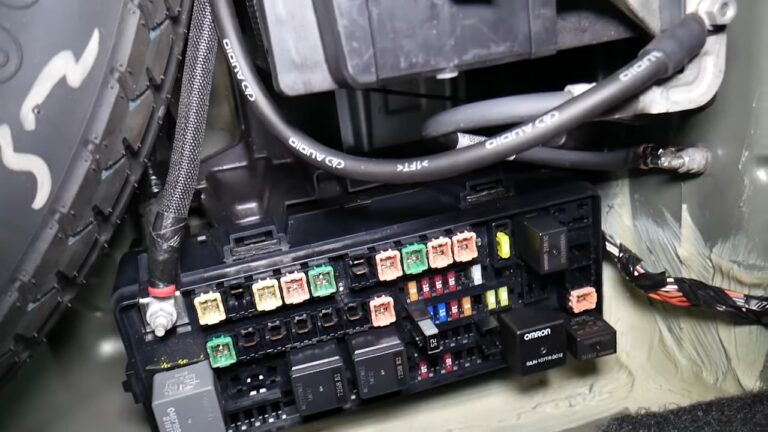12 Common Problems with Dodge Chargers

The Dodge Charger, a celebrated muscle car known for its powerful performance and iconic design, has remained a favorite among automotive enthusiasts for decades. However, like any vehicle, it is not without its flaws. Over the years, Dodge Charger problems have been reported across various model years, affecting areas such as the transmission, suspension, and power steering. Many owners have reported issues that surface after crossing the 100,000-mile mark, while others experience problems earlier due to manufacturing defects, prompting the brand to issue recalls.
Some of the most common problems with Dodge Chargers include transmission problems, premature engine failure, suspension problems, and electrical glitches that may cause warning lights to appear or systems to stop working.
1. Transmission Issues
Many Dodge Charger owners have reported issues with the transmission, including gear slippage, hard shifting, and decreased acceleration. Some vehicles even exhibit erratic gear changes, where the car shifts on its own. These problems are often related to the transmission control module, and Dodge has addressed some of these issues through a software update. However, mechanical failures still require costly repairs.
2. Electrical Problems
Electrical issues are another frequent complaint, with problems ranging from gear slippage to loss of cabin power or power steering. In some cases, these are caused by transmission fluid leaking onto the electrical connectors, leading to short circuits. Cabin lights staying on after the vehicle is put into drive, as well as dashboard warning lights behaving erratically, are also reported issues.
3. Suspension Problems
Suspension problems in Dodge Chargers often manifest as squeaks or unusual noises during turns. These are typically caused by worn-out ball joints or loose bolts in the steering rack. Addressing these issues early can prevent further wear and ensure smoother handling.
4. Faulty Alternator
A failing alternator is a common issue in some Charger models, especially those from earlier model years. Signs include a “Battery Power Saver” warning on the dashboard, burning rubber smells, and erratic behavior from warning lights. In 2014, Dodge even issued a recall to address alternator-related failures.
5. Thermostat and Overheating Problems
A faulty thermostat can lead to engine overheating, which risks premature engine failure if not addressed. Overheating can also activate the “Check Engine” light, leaving drivers puzzled unless the thermostat issue is diagnosed. Regular cooling system checks can help mitigate this problem.
6. Faulty Windows and Air Conditioning
Windows in some Dodge Charger models may stop working or fail to roll up or down properly. Similarly, air conditioning systems sometimes emit a musty odor due to clogged cabin air filters, which is a simple but recurring problem among Dodge Charger owners.
7. Faulty Camshaft
One of the more expensive problems Dodge Charger owners have reported is camshaft failure, typically occurring around the 100,000-mile mark. A failing camshaft can result in reduced engine performance and costly repairs ranging from $3,000 to $5,000. Routine inspections and timely maintenance can help catch wear early and avoid catastrophic failure.
8. Premature Engine Failure
Premature engine failure is a significant concern for some Dodge Charger models, particularly those from earlier production years. Causes range from overheating due to faulty cooling systems to oil contamination from blown head gaskets. Signs of potential engine failure include knocking noises, excessive exhaust smoke, and loss of power. Addressing early warning signs and adhering to a regular maintenance schedule is key to preventing costly repairs.
9. Faulty Head Gaskets
A blown head gasket is another common problem reported by Dodge Charger owners. Symptoms include discolored oil or coolant, a sweet odor from the exhaust, and excessive steam from the tailpipe. Ignoring these signs can lead to severe engine damage, so it’s important to repair this issue promptly to avoid further complications.
10. Rear Brake Problems
Issues with the rear brake system are frequently cited among Charger owners, including premature wear of brake pads and rotors. Some drivers have also reported receiving false brake warning lights, which can be misleading but require immediate inspection to rule out real issues. Replacing worn brake components on time helps ensure optimal braking performance.
11. Cylinder Misfire
Cylinder misfires are a common Dodge Charger problem, often resulting in a rough-running engine, decreased fuel efficiency, and slower acceleration. Misfires typically occur due to spark plug or ignition coil failure, clogged fuel injectors, or compression issues within the engine. Regular tune-ups can help identify and resolve these problems before they escalate.
12. Faulty Oil Filter Bypass Valve
Some Dodge Chargers equipped with the 3.6L Pentastar engine experience oil filter bypass valve failures. This component allows oil to flow when the filter is clogged, and its failure can result in unfiltered oil circulating through the engine, potentially causing damage. Replacing this part is a simple and inexpensive fix that can prevent more significant issues.






